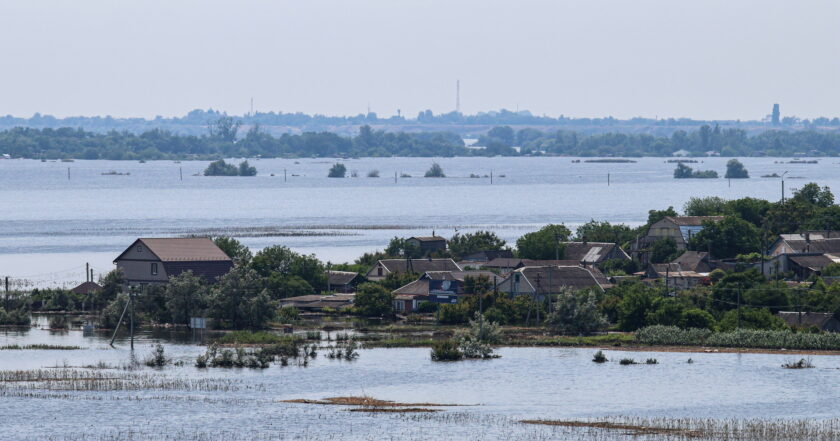Pollutants found in Dnipro River and Black Sea following Kakhovka dam destruction raise health concerns

Photo: Rubryka
The Ukrainian Scientific Center for Marine Ecology, with the assistance of Yulia Merkhel, head of the Let's Do It Ukraine youth movement, took water samples in four locations downstream from the Kakhovka Reservoir, where on July 6, the largest man-made disaster in Ukraine since Chornobyl happened — the Russian troops blew up the Kakhovka dam.
The center reported on its Facebook page that the initial pollution of the Dnipro River occurred just a few hours after the dam was blown up. Within two days, the pollution reached the coast of Ukraine's southern city of Odesa. From the first days of the disaster until now, pollution has only grown.
Scientists sampled water in several locations: in the Dnipro River near Kherson, in the Dnipro-Buzka estuary, in the Black Sea near the town of Ochakiv, and in the Odesa Bay, and analyzed it for toxic pollution. The analysis showed that the pollution level in all four places is equally dangerous.

Map of locations where water and bottom sediment samples were taken. Source: at the link
Oil products and toxic metals such as zinc, cadmium, and arsenic, as well as organochlorine compounds such as lindane and polychlorinated biphenyls (PCBs), exceed the maximum permissible concentrations in water. The latter are chemical compounds that, once inside the body, can cause malignant formations. Previously, PCBs were used in industrial and consumer products, the production of which was banned in the United States by the Toxic Substances Control Act back in 1979 and internationally by the Stockholm Convention on Persistent Organic Pollutants in 2001.
The high concentration of carcinogenic compounds resulted from the bottom sediments in the Kakhovka Reservoir that could accumulate for years, coming down from industrial enterprises located downstream. Oleksii Vasyliuk from the Ukrainian Environmental Protection Group previously pointed out the possibility of such an outcome, and now the worst predictions have come true.
The center reports that PCBs can be dangerous for many types of aquatic organisms, in particular fish and invertebrates. They can cause damage to the nervous system, leading to paralysis and death. These pollutants tend to accumulate in body tissues, especially fatty tissues. This means they can get into the food chain, causing even more damage to organisms at the upper nutrition levels, including humans.
Regarding cadmium and zinc, the center says that these metals are toxic to many types of aquatic organisms, especially at high concentration levels. They can affect marine organisms' reproductive, growth and other biological processes. Even if individual species can tolerate high levels of copper and zinc, these metals can accumulate in the food chain, leading to even higher concentrations in organisms higher up the food chain, such as marine mammals or humans. People who eat seafood or drink water with high levels of copper or zinc can experience various health problems, including liver, heart, kidneys, or nervous system problems.
For now, swimming remains prohibited in the coastal areas of the country. The people are advised to avoid contact with rivers and seawater, avoid seafood caught in local waters, and do wet cleaning at home because dust particles that rise from the bare bottom of the reservoir also contain harmful substances.






















































